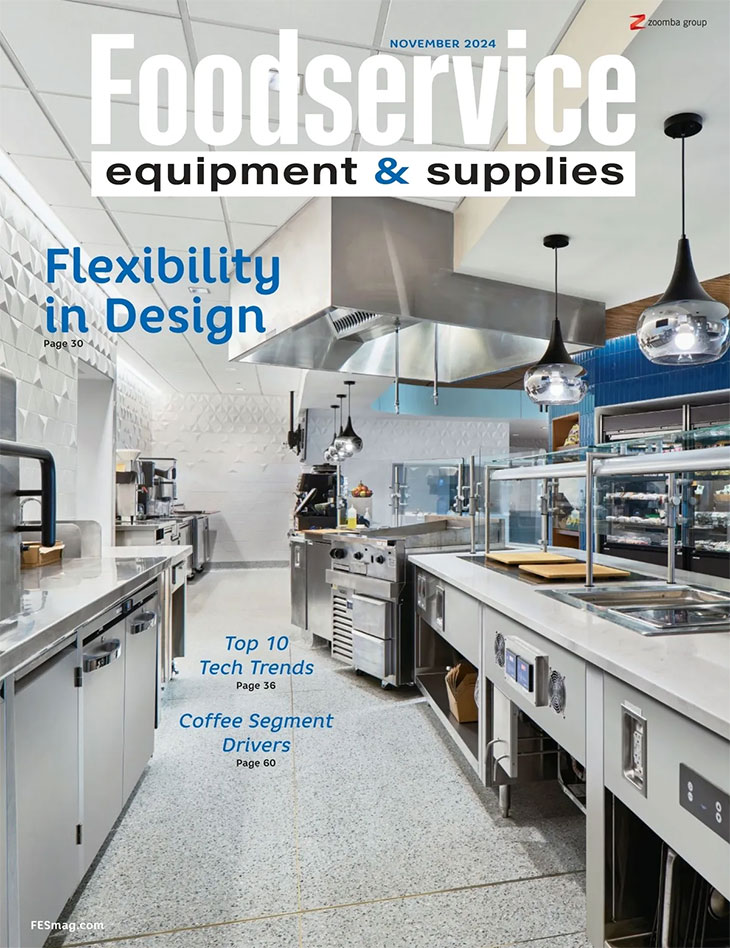Operators should consider the location of the unit. “Will it be under an ADA section of the bar?” asks Emalee Austerman, project coordinator at Camacho Associates, Atlanta. “If so, bar operators will need to make sure it will fit under the counter. Will it be in view of the customer or near customer seating? In this case, they will probably want a low-temp option with a slow start-up to avoid excess steam and noise.”
Sanitation and Safety Guides
Situated over cook lines, ventilation systems remove cooking heat, effluent and odors.
Type I ventilation systems are grease rated for positioning over grease-producing appliances, including ranges, griddles, fryers and charbroilers. Type II or B units, also called vapor hoods, are designated to handle heat and steam over dishwashers and some oven types.
New innovations in the category include steam elimination and energy recovery.
Pizza restaurant dish rooms, like those in other foodservice segments, continue to shrink in size. These cramped spaces can be difficult environments for staff to work in as well as inefficient when ergonomics are an issue.
Components of these units include removable upper and lower rinse arms, pump drains, detergent pumps, built-in temperature boosters for high-temp warewashers and sanitizing pumps on low-temp machines. Insulated doors, low-chemical alerts and delime alarms typically come standard. Some warewashers have digital controls on top that display water temperature and cycle information, while others can automatically extend the rinse cycle to ensure water reaches 180 degrees F.
Thanks to oil-filtration systems, the days of kneeling in front of a fryer with a filter cone and a stock pot, anticipating the flow of boiling-hot oil, are over.


















